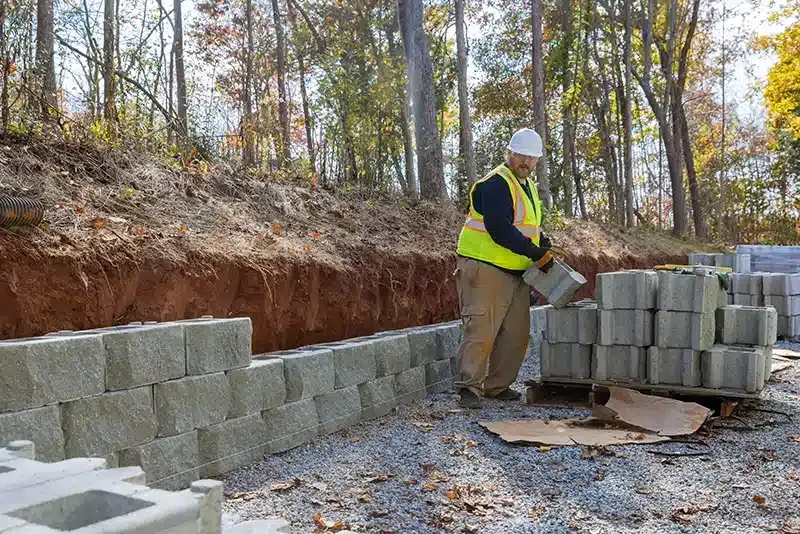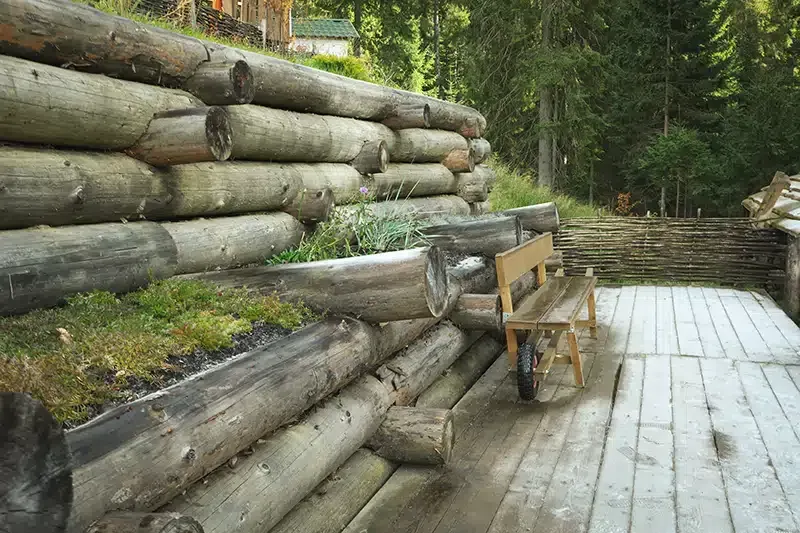When is it necessary to get permits for commercial retaining walls?
When Is It Necessary to Get Permits for Commercial Retaining Walls?

Retaining walls are crucial for stabilizing slopes, preventing erosion, and creating usable space on commercial properties. Whether supporting a parking lot, landscaping an office complex, or managing water flow, these walls must be built to last—and that means complying with local regulations.
One of the most commonly overlooked aspects of planning is determining whether permits are needed. Building without proper permits can lead to project delays, fines, or the need for expensive modifications.
Understanding when permits are necessary is the first step toward a safe and compliant construction process.
Height and Load Requirements
One of the most common triggers for a retaining wall permit is its height and what it’s supporting.
- Walls over a certain height typically require permits. In many jurisdictions, any retaining wall over 3 or 4 feet tall must be permitted and inspected. This is due to the increased risk of failure from soil pressure.
- Supporting structures or loads affect permit requirements: If the wall is holding back soil under a driveway, structure, or heavy equipment, a permit is usually required, regardless of height.
- Tiered wall systems are considered cumulative: When multiple walls are constructed in a stepped formation, the total height of the system may determine the need for permits.
Location on the Property
Where the retaining wall is placed can impact whether permits are needed and what kind of oversight is involved.
- Walls near property lines often need approval: If the wall is built close to a neighbor’s property, setback and zoning rules usually apply.
- Walls near public infrastructure may require special permits: Walls adjacent to sidewalks, roads, or utilities often need extra scrutiny from city or county departments.
- Construction in easements or rights-of-way is regulated: Even if the wall is on private property, you may need a permit if it interferes with public access or utility zones.
Soil and Drainage Considerations
How the retaining wall interacts with the environment is another major factor in permit requirements.
- Retaining walls that impact stormwater flow need permits: If the wall changes how water drains across a property, a permit may be required to ensure proper water management and avoid downstream flooding.
- Walls built into slopes or unstable ground need engineering review: Municipalities often require engineered plans and permits when walls are built on difficult terrain.
- Environmental areas may add regulatory layers: If your project is near wetlands, creeks, or other protected areas, permits from environmental agencies might be necessary.
Structural Engineering and Safety Codes
Ensuring the retaining wall can handle pressure and remain safe for long-term use is a key reason why permitting exists.
- Engineered plans are often required for commercial walls, especially when hiring a professional retaining wall builder to ensure safety and code compliance
- Building codes often dictate wall specifications: Local or state building codes may specify materials, wall thickness, reinforcements, and tie-back systems that require inspection and approval.
- Permit requirements increase with public exposure: If the wall is in a location accessible to the public, such as a commercial entrance or walkway, more stringent safety rules and permits are usually required.
Municipal and Zoning Regulations
Permit requirements can vary widely by city, county, or state, so knowing your local rules is essential.
- Always check with your local building department: Requirements differ depending on location, zoning district, and the specifics of the project.
- Commercial properties face stricter regulations: Compared to residential properties, commercial sites often have higher standards for construction, accessibility, and safety.
- Permits help ensure compliance and avoid liability: Building without a permit can lead to enforcement actions, liability issues, or insurance problems if the wall fails.
When building a commercial retaining wall, securing the proper permits isn’t just a bureaucratic step—it’s a necessary part of protecting your investment, ensuring safety, and complying with legal requirements. From wall height and load to property location and soil conditions, many factors influence whether a permit is needed.
Consult with your local building department and work with licensed professionals to make sure your retaining wall is both compliant and built to last.


